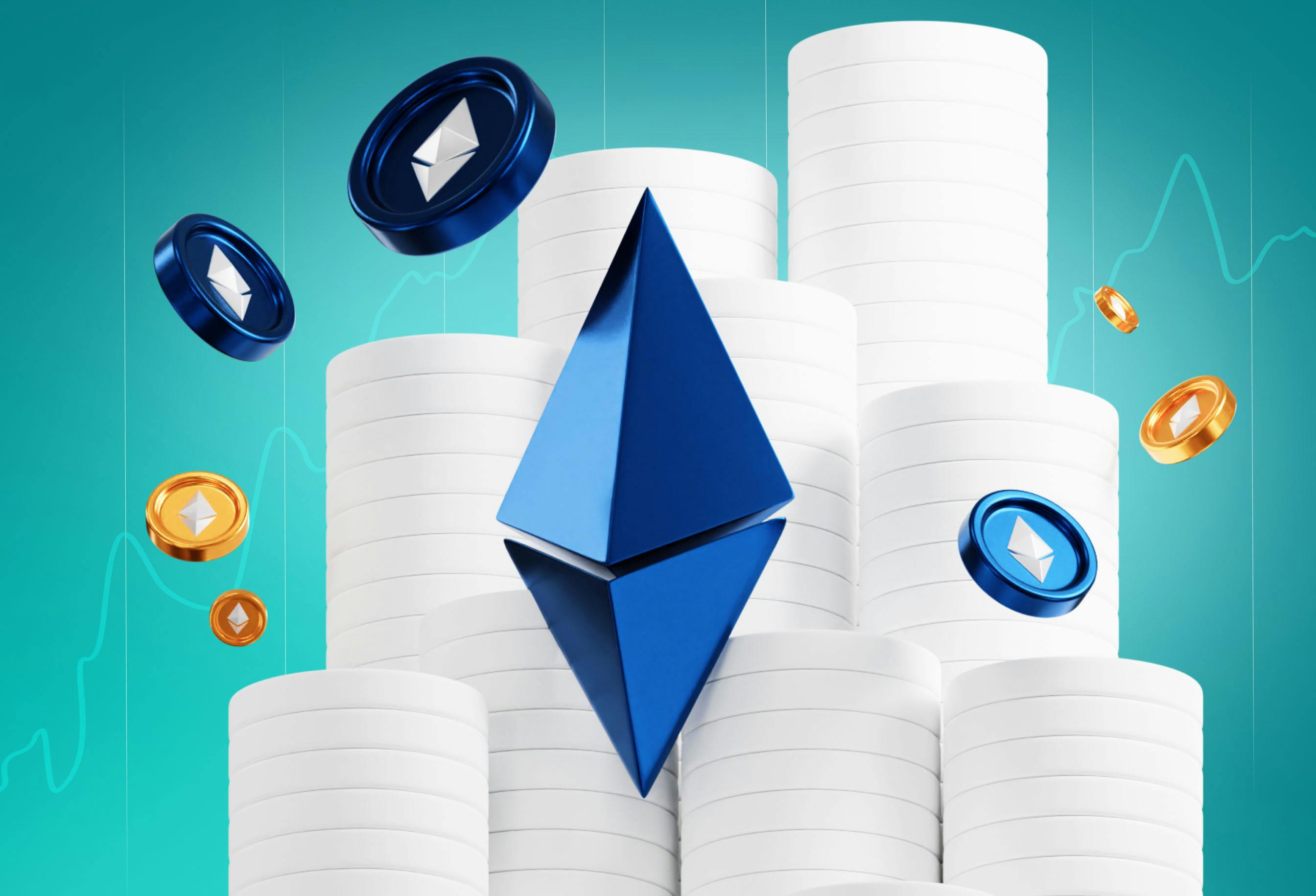
- All
- Tools
- Analytics
- Technical Analysis
- Trading
- Blockchain
- DeFi
- Guides
- Company News
- Educational
- Opinion
- Price Predictions
- Market News
- News
- Trading cases
- Practical guides
- Exchanges
- Trading signals
- Cryptocurrency
- Crypto bots
- Other
Become a crypto master
Learn everything about crypto,
trading and bots

How to Trade Ripple (XRP): Strategies, Tips, and Best Practices in 2025
Learn how to trade Ripple (XRP) with the help of this comprehensive guide. Discover how you can navigate the cryptocurrency market by becoming familiar with the unique features of Ripple and how to develop a trading strategy.
- Overview of Ripple
- Research and Analysis
- How to Conduct Thorough Research on Ripple and Its Market Trends
- Understand Ripple's Technology
- Explore the Use Cases of Ripple
- Analyze Ripple's Market Position
- How to Study Ripple's Historical Price Data
- Analyze Price Patterns
- Technical Indicators
- Candlestick Analysis
- How to Identify Factors That Can Impact Ripple's Price Movement
- Market News and Events
- Market Sentiment and Social Media Analysis
- Macro-Economic Factors
- How to Use Fundamental Analysis Techniques to Evaluate Ripple's Potential Value
- Financial Statements
- Partnerships and Collaborations
- Competitive Analysis
- Choosing a Trading Platform
- Developing a Trading Strategy
- Tips for Executing Trades
- Conclusion (Updated for 2023)
- XRP Trading Insights for 2025: Institutional Growth, Market Instruments, and Strategic Considerations
Start Trading on 3Commas Today
Get full access to all 3Commas trading tools with free trial period

Ripple (XRP) has emerged as a key player in the volatile cryptocurrency market, garnering the attention of both traders and investors. It has established itself as an important part of the ever-evolving market due to its unique features and potential to revolutionize financial transactions.
However, before exploring how to trade Ripple, it is important to understand the basics of trading. Trading cryptocurrencies requires a combination of knowledge, experience, and discipline. That is why this article will equip you with the skills and knowledge you need to trade Ripple effectively.
Ripple (which is often referred to as a digital currency and a technology) has a different value proposition when compared to other cryptocurrencies like Bitcoin or Ethereum. Its main purpose is to enable cheap and fast cross-border transactions via a decentralized network and a unique payment system.
This article explores the steps that you need to take when developing a well-defined strategy for trading Ripple. We will also discuss how you can determine the right time frame for trading among others.
Overview of Ripple
Ripple (XRP) goes beyond just a cryptocurrency; it is also a payment system and a digital payment infrastructure referred to as RippleNet. The main goal of Ripple is to enable quick, inexpensive, and secure international transactions. Unlike other cryptocurrencies, Ripple does not rely on traditional mining procedures. Instead, it uses a consensus method known as the Ripple Protocol Consensus Algorithm (RPCA). This approach allows for faster transaction confirmation while also drastically reducing energy use.
One of Ripple's key features is its ability to bridge multiple currencies and enhance seamless transactions. It acts as a means of exchange or bridge currency for various fiat currencies, cryptocurrencies, and commodities. As a result, Ripple is an attractive solution for banks, financial institutions, and payment processors looking to accelerate cross-border operations. The existing correspondent banking system, which is usually inefficient, costly, and prone to errors, is to be replaced with Ripple.
Furthermore, Ripple has partnered and collaborated with diverse financial institutions worldwide, including banks, payment processors, and remittance companies. These collaborations strengthen Ripple's validity and potential for widespread adoption. There are other prominent collaborations, including those between American Express, Santander, Standard Chartered, and MoneyGram. These collaborations increase Ripple's liquidity and market value.
Research and Analysis
Before you start trading Ripple, it is important to carry out extensive research and analysis. Here are the steps involved in researching and analyzing Ripple and its market trends:
How to Conduct Thorough Research on Ripple and Its Market Trends
Understand Ripple's Technology
You can start researching and analyzing Ripple and its market trends by understanding the fundamental aspects of the cryptocurrency, including its network and digital currency (i.e., XRP). Ensure you have a clear understanding of how Ripple differs from other cryptocurrencies and how its technology works.
Explore the Use Cases of Ripple
Understand the practical applications of Ripple. You can do this by studying how banks, financial institutions, and other industries are using Ripple to foster faster and less expensive cross-border transactions. You can have an idea of how Ripple will evolve in the future by understanding how its technology may affect society.
Analyze Ripple's Market Position
You can also research the comparison between Ripple’s market position and those of other cryptocurrencies. Analyze its trading activity, market capitalization, and overall market sentiment. Also, analyze the previous performance of Ripple and its growth potential.
How to Study Ripple's Historical Price Data
Analyze Price Patterns
Examine the historical price pattern of Ripple to understand the trends or recurring patterns of the cryptocurrency. Look for chart patterns such as head-and-shoulders and triangles, as well as trend lines and levels of support and resistance. These patterns can provide insight into potential trading entry and exit opportunities.
Technical Indicators
Use technical indicators to determine the direction and strength of the price movements of Ripple. Common indicators that you can use for this purpose include moving averages, the relative strength index (RSI), and Bollinger Bands. These tools can help you identify overbought or oversold conditions as well as potential trend reversals.
Candlestick Analysis
You can have a better understanding of the price movements by studying candlestick patterns. Some of the candlestick patterns include doji, hammer, engulfing, and shooting stars. These can suggest when trends are likely to continue or when the market is likely to reverse.
How to Identify Factors That Can Impact Ripple's Price Movement
Market News and Events
Keep up with the latest news and events about Ripple. Important announcements, partnerships, regulatory changes, or technological advancements can have a significant impact on the price and market sentiment of Ripple.
Market Sentiment and Social Media Analysis
Examine how Ripple is perceived in the cryptocurrency sector and on social media. Study market discussions, opinions, and sentiment indicators to know how the market feels about Ripple.
Macro-Economic Factors
Pay attention to the macroeconomic factors that can influence the price of Ripple. Some of these factors include government regulations, geopolitical events, and global economic conditions.
How to Use Fundamental Analysis Techniques to Evaluate Ripple's Potential Value
Financial Statements
If available, examine Ripple’s financial documents and reports. Analyze factors such as revenue growth, costs, and profit margins to discover more about Ripple's financial condition and future growth prospects.
Partnerships and Collaborations
Consider Ripple's partnerships and collaborations with major industry leaders and financial organizations. Study the significance of these collaborations and how they may affect the use and value of Ripple.
Competitive Analysis
Compare Ripple with other digital currencies and blockchain-based technologies that offer similar use cases. You can understand the competitive position of Ripple by conducting a SWOT analysis of the cryptocurrency. This will help you understand its strengths, weaknesses, opportunities, and threats.
Choosing a Trading Platform
It is important to choose the right trading platform when you want to trade Ripple or any other cryptocurrency. A reliable and user-friendly platform can have a significant impact on your trading experience, security, and overall success.
Here are the factors you need to consider when choosing a platform to trade Ripple:
Security
Choose platforms that use robust security features such as two-factor authentication (2FA), cold storage, and user data encryption. A reliable platform should have a track record of securing user assets and maintaining system integrity.
Reputation
Consider the trading platform's reputation in the crypto market. Check to see if the platform has ever been involved in any major security breaches or scandals by reading reviews and soliciting feedback from other traders. A reputable online trading platform is more likely to provide a reliable trading environment.
Liquidity
Liquidity refers to the ability to complete trades on time and at the stipulated price. A platform with high liquidity enables smoother trade executions by ensuring that there are adequate Ripple buyers and sellers. Furthermore, increased liquidity minimizes the possibility of significant price slippage during unstable market conditions.
User Interface
A user-friendly design can improve the Ripple trading experience for new traders. Look for a trading platform with an easy-to-use interface that allows you to quickly access important tasks such as placing orders, checking charts, and managing your account. Ensure that the platform also provides a responsive and reliable trading experience.
Trading Tools and Charting
Consider the platform's trading instruments and charting capabilities. Advanced charting tools, technical indicators, and sketching tools can help with in-depth research and well-informed trading judgments. Order types (i.e., market orders, limit orders, and stop orders) and order management options can also boost your trading capabilities.
Supported Trading Pairs
Check to see if the trading platform offers Ripple (XRP) trading pairs with prominent fiat currencies like the US dollar and euro, as well as other cryptocurrencies like bitcoin and ether. The presence of different trading pairs allows for greater flexibility in trading execution and also helps you explore different trading strategies.
Developing a Trading Strategy
It is important to have a clear trading strategy when trading Ripple (or any other cryptocurrency). Using a trading strategy allows you to make well-informed decisions, control risks, and maximize potential rewards. Here are some important steps to take to develop an effective Ripple trading strategy:
Define Your Trading Goals and Risk Tolerance
Before you start trading Ripple, you must first define your trading goals and understand your risk tolerance. Do you want to make long-term investments or quick profits? How much money are you willing to risk? Your goals will guide your trading strategy, which will help you choose the best course of action.
Conduct Market Research
Information is important in the trading world. Spend some time researching and understanding the Ripple market. Examine market trends, historical price data, and elements that could influence Ripple's price movement. Keep up with Ripple and its ecosystem developments, announcements, and news.
Choose a Trading Strategy
You can use different strategies to trade Ripple. Here are some of the approaches you can use:
Technical Analysis
This strategy involves evaluating price patterns, charts, and indicators to locate potential entry and exit positions. It usually uses previous pricing data to estimate future price fluctuations.
Trend Following
This strategy involves identifying and sticking to current pricing patterns. Traders attempt to profit from the momentum of a trend by going long (buying) during an upswing or short (selling) during a downtrend.
Swing Trading
Swing traders seek to profit from more rapid price changes within a wider trend. They hold positions for several days or weeks while looking for price reversals at support and resistance levels.
Fundamental Analysis
This involves evaluating Ripple’s underlying technology, partnerships, adoption, and market demand. Traders that use this method look for cheap or overpriced opportunities.
Set Clear Entry and Exit Rules
It is important to establish clear entry and exit rules to maintain discipline and prevent illogical decision-making. Set precise trade entry criteria, such as breakout levels, moving average crossovers, or candlestick patterns. Also, set your exit rules, such as profit targets and stop-loss levels, to avoid further losses.
Implement Risk Management Strategies
Risk management is important in trading. Determine the appropriate position size for each trade based on your risk tolerance and account balance. Make sure not to put all of your money into a single trade. Consider diversifying your portfolio by including more cryptocurrencies or assets to lower risk.
Test and Refine Your Strategy
After designing your trading strategy, test it in live market conditions. To measure its performance, start with a practice account or paper trades. Keep a trading notebook to keep track of your trades, results, and lessons learned. Evaluate your performance regularly and make changes to your plan to improve it over time.
Tips for Executing Trades
There are some tips you need to know when you want to execute trades in the Ripple market. These include:
Understand Different Order Types
Learn about the different order types that are available on cryptocurrency exchanges. The commonest types include the following:
Market Orders
This type of order is executed immediately at the current market price. It is appropriate when you need to enter or leave a position quickly.
Limit Orders
A limit order allows you to specify the price at which you are willing to buy or sell Ripple. The order will be executed only if the market reaches that price.
Stop Orders
This order is triggered when the price of Ripple gets to a certain level. It can be used to initiate new positions (stop-buy) or to protect profits (stop-loss).
Set Realistic Targets
Ensure you set clear profit targets and stop-loss levels before you execute a trade. Profit targets specify your desired level of gain, while stop-loss levels limit your potential losses. Setting these levels before executing a trade allows you to remain disciplined and avoid making emotional decisions when prices fluctuate.
Execute Trades Timely
Act promptly after discovering a profitable trading opportunity. Delays in execution may result in missed opportunities or negative price fluctuations. However, it is important to maintain a balanced perspective and avoid making quick judgments. Always double-check your order details before executing trades.
Maintain Trading Discipline
Follow your trading plan and avoid making quick decisions based on emotions or short-term fluctuations in the market. Long-term success in Ripple or any other cryptocurrency trading requires focus and consistency. You can also maintain trading discipline by not revenge trading (i.e., trying to recover your losses).
Conclusion (Updated for 2023)
In conclusion, this guide has provided a comprehensive overview of trading Ripple (XRP) as of 2023. Ripple remains a unique player in the cryptocurrency market, offering a real-time gross settlement protocol, currency exchange, and money transfer system primarily catering to financial institutions and banks. The Ripple network's standout feature is its lightning-fast transaction speed, enabled by a vast network of servers worldwide.
When considering investments in XRP, it's important to take into account various factors that can impact its price. Technology advancements and Ripple's goal of challenging traditional payment systems like SWIFT continue to drive interest. Media attention, often amplified by partnerships and agreements, can significantly influence market sentiment. Additionally, general market trends and regulatory changes can have both positive and negative effects on XRP's value.
Buying and selling XRP involve a series of steps, from selecting the right wallet to choosing a suitable exchange. While various exchanges, such as Bitstamp, Kraken, and GateHub, support XRP trading, it's essential to research and select a platform that aligns with your needs. Methods of purchasing XRP range from bank transfers to credit card payments and even PayPal transactions.
For selling XRP, cryptocurrency exchanges remain the preferred avenue, allowing you to exchange XRP for other cryptocurrencies or fiat currencies. Popular exchanges like Binance offer a user-friendly interface for trading XRP and other assets.
As for the future of XRP, it's marked by both optimism and skepticism. The Ripple team continues to forge partnerships and expand its network, with over a hundred banks testing Ripple's software. The speed and reliability of XRP transactions, along with its adoption by banks for international transactions, are key factors supporting its growth. Additionally, blockchain technology's cost-efficiency and partnerships with major players like Tencent Holding Limited are further driving XRP's adoption.
In the end, whether you choose to invest in XRP or any other cryptocurrency, it's crucial to exercise caution and conduct thorough research. Cryptocurrency markets are known for their volatility, and investing more than you can afford to lose is a risk that should be avoided. Stay informed, make informed decisions, and always keep a close eye on market developments to navigate the world of cryptocurrency trading successfully in 2023.
XRP Trading Insights for 2025: Institutional Growth, Market Instruments, and Strategic Considerations
As of 2025, Ripple’s XRP continues to attract institutional attention and increased market sophistication. Traders and asset managers now have access to a wider range of instruments and tools, including futures, leveraged ETFs, and AI-enhanced automation.
Institutional Engagement and Market Instruments
- CME Group’s XRP Futures: Starting May 19, CME Group is set to introduce cash-settled XRP futures, pending regulatory approval. This expansion is expected to boost liquidity and offer advanced hedging options for professional traders and institutions alike.
- Leveraged Access via ETFs: Teucrium’s launch of the 2x Long Daily XRP ETF (XXRP) demonstrates the growing demand for asset-specific exposure. While these leveraged products require cautious use, they are increasingly used in automated trading bot cryptocurrency strategies for tactical positioning.
Advanced Tools and Automation Trends
- Machine Learning and Predictive Modeling: XRP price modeling in 2025 increasingly incorporates empirical mode decomposition (EMD) paired with machine learning classifiers such as Random Forests and XGBoost. These systems, when integrated into automated crypto trading bots, support data-driven decision making and scenario-based strategy design.
- Use of Automated Crypto Trading Software: Institutional and high-volume retail traders are increasingly adopting automated trading bot crypto systems to manage XRP positions. These tools—often deployed through automated crypto trading platforms—support continuous execution of strategies, from scalping to volatility harvesting, and allow tighter alignment with pre-set trading logic.
- Bot Signal Optimization: Modern bot signal trading frameworks now offer customizable parameters for XRP pairs, integrating technical indicators, price momentum triggers, and volume filters. These advancements allow traders using an automated cryptocurrency trading bot to dynamically react to market shifts without manual intervention.
Regulatory Developments and Risk Planning
- Legal Framework Uncertainty: While the 2023 ruling clarified that XRP is not a security when traded on exchanges, the SEC’s appeal continues to influence sentiment. Automated trading crypto strategies must account for this regulatory overhang, particularly when designing systems that rely on U.S.-based exchanges.
- Volatility Preparedness: Analysts expect XRP’s price in 2025 to fluctuate between $1.80 and $10, reinforcing the importance of using an automated trade bot with robust stop-loss logic, position sizing constraints, and capital preservation rules built in.
Conclusion
The XRP trading environment in 2025 reflects a shift toward structured automation and institutional infrastructure. Automated crypto trading software and bot trading platforms are now integral to high-volume execution strategies, enabling disciplined, repeatable approaches. While opportunities continue to emerge, traders should deploy tools that support transparent risk control, consistent re-evaluation, and adaptability across volatile market conditions.
FAQ
Despite its slight differences from other cryptocurrencies, XRP can be bought and traded in the same way as most of its competitors. Although most US exchanges have delisted or temporarily suspended trading Ripple due to its legal battles with the Securities and Exchange Commission, you can still buy XRP on some popular cryptocurrency exchanges.
Here are the steps to follow to buy Ripple (XRP):
- Create a digital wallet that is compatible with Ripple.
- Choose a reputable crypto exchange, such as Binance or Coinbase.
- Create an account on the exchange of your choice and complete any required verification procedures.
- Deposit fiat currency or other cryptocurrencies into your exchange account.
- Place a buy order for XRP on the exchange, specifying the quantity and price, and then confirm the transaction. Next, transfer the XRP you just bought to your crypto wallet.
Ripple (XRP) can be traded on reputable cryptocurrency exchanges such as Binance, Coinbase, Kraken, Bitstamp, or Bittrex. These exchanges offer user-friendly interfaces, cutting-edge trading capabilities, and strong security measures.
XRP is a cryptocurrency with digital payment technology meant to accelerate international transactions. The technological skills of the company, as well as its partnership with financial institutions, signify its future use cases.
Nevertheless, its classification as a security raises legal concerns. The market performance and volatility of XRP might provide insight into its investment possibilities. When deciding whether XRP is a good cryptocurrency, it is important to examine the risks and consider each investor's investment goals and risk tolerance.
XRP is used for real-time gross settlement (RTGS). This enables rapid and low-cost cross-border transactions. XRP also functions as a bridge currency by providing liquidity and facilitating quick currency conversions. Payments and remittances can be made using XRP, which has low transaction costs and a short confirmation time. It also serves as a platform for asset tokenization, allowing for the creation and trade of tokenized assets on the Ripple network.

Adedamola is a highly resourceful content writer with comprehensive experience in researching and creating simple content that engage and educate the audience. He is interested in improving the marketing results of blockchain and crypto brands through great content.
READ MORE
- Overview of Ripple
- Research and Analysis
- How to Conduct Thorough Research on Ripple and Its Market Trends
- Understand Ripple's Technology
- Explore the Use Cases of Ripple
- Analyze Ripple's Market Position
- How to Study Ripple's Historical Price Data
- Analyze Price Patterns
- Technical Indicators
- Candlestick Analysis
- How to Identify Factors That Can Impact Ripple's Price Movement
- Market News and Events
- Market Sentiment and Social Media Analysis
- Macro-Economic Factors
- How to Use Fundamental Analysis Techniques to Evaluate Ripple's Potential Value
- Financial Statements
- Partnerships and Collaborations
- Competitive Analysis
- Choosing a Trading Platform
- Developing a Trading Strategy
- Tips for Executing Trades
- Conclusion (Updated for 2023)
- XRP Trading Insights for 2025: Institutional Growth, Market Instruments, and Strategic Considerations





